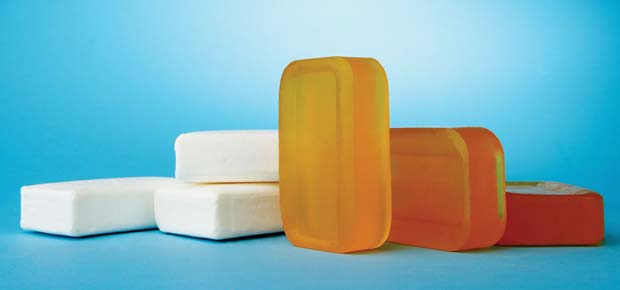Though the beginning of detergent industry is not shrouded in the veils of history as were the start of soap industry, it is nevertheless not easy to find when the detergent industry, as such, came into existence. An important issue is to decide exactly what is being termed as a synthetic detergent as the term itself leads to confusion. In the United States of America, the word surfactant or syndet is being used, while in Europe the term 'tenside' (for tensio-active material) came into fashion.
The chemistry of soap manufacturing remain primarily the same until the year 1916, when the first synthetic detergent was developed in Germany in response to the shortage of fats for making soaps during the World War I. Commonly known as detergents today, synthetic detergents are non-soap washing and cleaning products, which are put together chemically or synthesized to produce a variety of raw materials. The invention of detergents was also driven by the need for a cleaning agent, which, unlike soap, would not combine with the mineral salts in water to form an insoluble substance (soap curd) on the fabric.
The earliest developed synthetic detergents were short-chain alkyl napthalene sulphonates that were later found to be only somewhat good detergents and so their properties were improved. Those detergents are still used today as wetting agents. During 1920's and 30's, straight chain alcohols were sulphonated to produce straight chain detergents. During the same time long chain alkyl and aryl sulphonates with benzene were developed as the aromatic nucleus (the alkyl portion was derived from kerosene). By the end of Second World War, alkyl aryl sulphonates swamped the detergent market over alcohol sulphates that later proved to be highly useful in the shampoo industry.

The major uses of earlier detergents were in hand dishwashing and fine fabric laundering. In 1946, came an important breakthrough in the development of detergents for all-purpose laundry applications, when the first "built" detergent (containing a builder/surfactant combination) was offered in the U.S. Surfactant is a basic cleaning agent of a detergent product, while a builder helps a surfactant to function more effectively. Phosphate compounds were used as builders in these detergents, which significantly improved their performance, thereby making them ideal for cleaning heavily soiled laundry.
Between 1950 and 1965, more than half of the detergents were based on the formula of a propylene tetramer conjugated to benzene (PT benzene), but later they were blamed for a rise in eutrophication in lakes and streams as they contain phosphates (from Sodium triphosphate). Although the problem has not been completely resolved in some cases, in some countries there has been an agreement for reducing the uses of phosphates however in countries where it is not a big issue no such action has been taken. The problem was set down to the branched chain formation of PT benzene that resulted in the bacteria's' inability to degrade them. Straight-chain alcohols are degradable, hence the steps were taken to form and produce a linear alkyl benzene molecule.
By the year 1953, the sale of detergents in US had surpassed those of soap. During that time, the detergents have all but replaced soap-based products that were used for laundering, dishwashing and household cleaning. Alone or in combination with soaps, the use of detergents started in many of the bars and liquids used for personal cleaning.
Since those early discoveries in the chemistry and technique of detergents and builders, developments have been continued that focuses on achieving more efficient and easy to use detergent products. Now the manufacturers give an important consideration to safety for consumers and the environment as well. Given below is a brief summary of important inventions over the years of the history of detergents.
1950s
Liquid laundry, hand dishwashing and all-purpose cleaning products

If you have decided to make soap at home, you will need soap making supplies in the form of raw materials, soap making equipment & tools ...
Read More
Someone has rightly said that clothes are not just clothes. They form an integral part of a person's personality and tell a lot about their nature and...
Read MoreCleansing products play an important role in the daily lives of people.
Both soaps and detergents are cleansing products that we frequently use in our
Soap is designed as a product to be used once and then flushed down the drain...